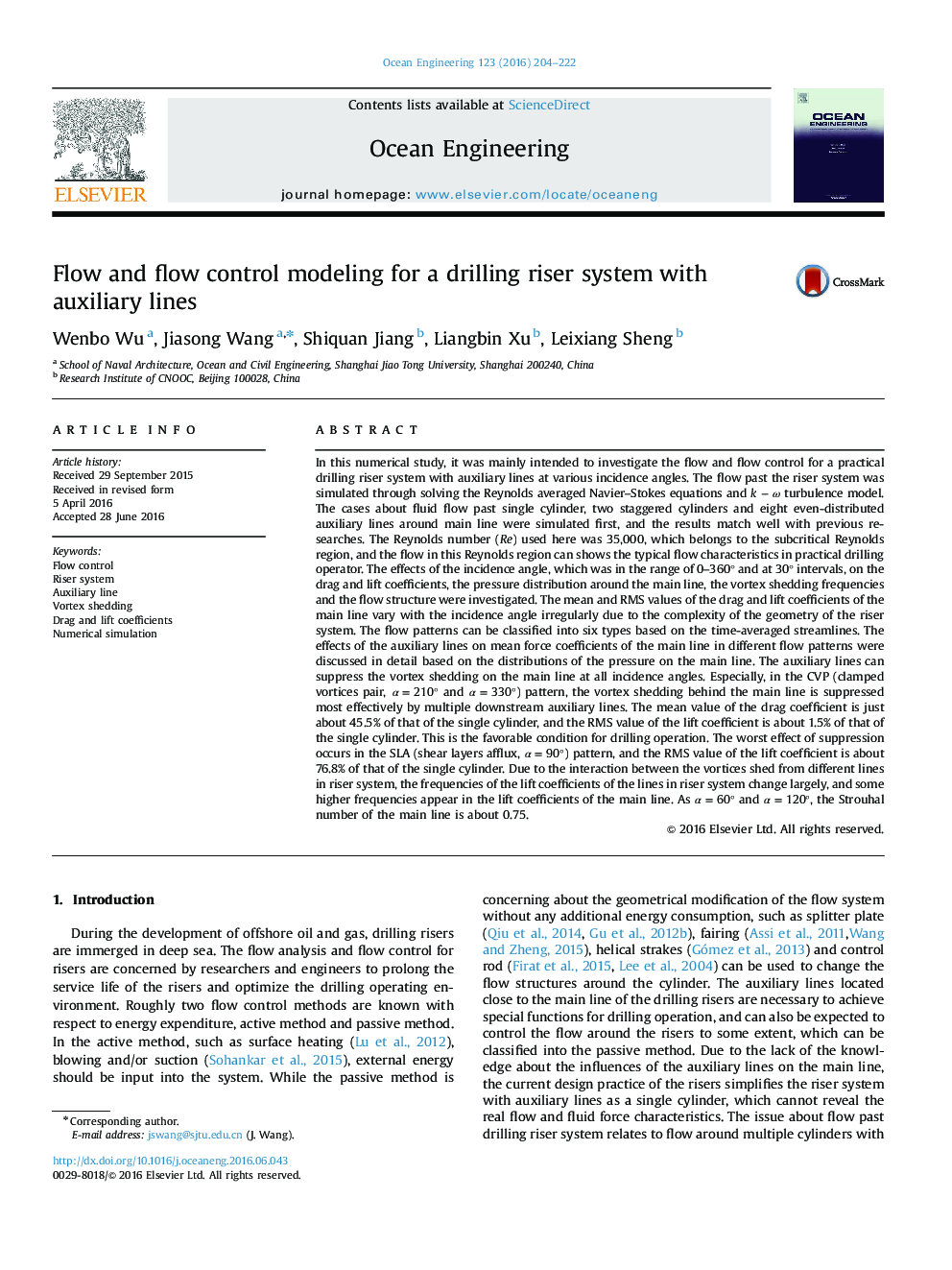| کد مقاله | کد نشریه | سال انتشار | مقاله انگلیسی | نسخه تمام متن |
|---|---|---|---|---|
| 8064119 | 1520667 | 2016 | 19 صفحه PDF | دانلود رایگان |
عنوان انگلیسی مقاله ISI
Flow and flow control modeling for a drilling riser system with auxiliary lines
ترجمه فارسی عنوان
مدل سازی جریان و جریان کنترل برای سیستم حفاری با خطوط کمکی
دانلود مقاله + سفارش ترجمه
دانلود مقاله ISI انگلیسی
رایگان برای ایرانیان
کلمات کلیدی
موضوعات مرتبط
مهندسی و علوم پایه
سایر رشته های مهندسی
مهندسی دریا (اقیانوس)
چکیده انگلیسی
In this numerical study, it was mainly intended to investigate the flow and flow control for a practical drilling riser system with auxiliary lines at various incidence angles. The flow past the riser system was simulated through solving the Reynolds averaged Navier-Stokes equations and kâÏ turbulence model. The cases about fluid flow past single cylinder, two staggered cylinders and eight even-distributed auxiliary lines around main line were simulated first, and the results match well with previous researches. The Reynolds number (Re) used here was 35,000, which belongs to the subcritical Reynolds region, and the flow in this Reynolds region can shows the typical flow characteristics in practical drilling operator. The effects of the incidence angle, which was in the range of 0-360° and at 30° intervals, on the drag and lift coefficients, the pressure distribution around the main line, the vortex shedding frequencies and the flow structure were investigated. The mean and RMS values of the drag and lift coefficients of the main line vary with the incidence angle irregularly due to the complexity of the geometry of the riser system. The flow patterns can be classified into six types based on the time-averaged streamlines. The effects of the auxiliary lines on mean force coefficients of the main line in different flow patterns were discussed in detail based on the distributions of the pressure on the main line. The auxiliary lines can suppress the vortex shedding on the main line at all incidence angles. Especially, in the CVP (clamped vortices pair, α=210° and α=330°) pattern, the vortex shedding behind the main line is suppressed most effectively by multiple downstream auxiliary lines. The mean value of the drag coefficient is just about 45.5% of that of the single cylinder, and the RMS value of the lift coefficient is about 1.5% of that of the single cylinder. This is the favorable condition for drilling operation. The worst effect of suppression occurs in the SLA (shear layers afflux, α=90°) pattern, and the RMS value of the lift coefficient is about 76.8% of that of the single cylinder. Due to the interaction between the vortices shed from different lines in riser system, the frequencies of the lift coefficients of the lines in riser system change largely, and some higher frequencies appear in the lift coefficients of the main line. As α=60° and α=120°, the Strouhal number of the main line is about 0.75.
ناشر
Database: Elsevier - ScienceDirect (ساینس دایرکت)
Journal: Ocean Engineering - Volume 123, 1 September 2016, Pages 204-222
Journal: Ocean Engineering - Volume 123, 1 September 2016, Pages 204-222
نویسندگان
Wenbo Wu, Jiasong Wang, Shiquan Jiang, Liangbin Xu, Leixiang Sheng,
